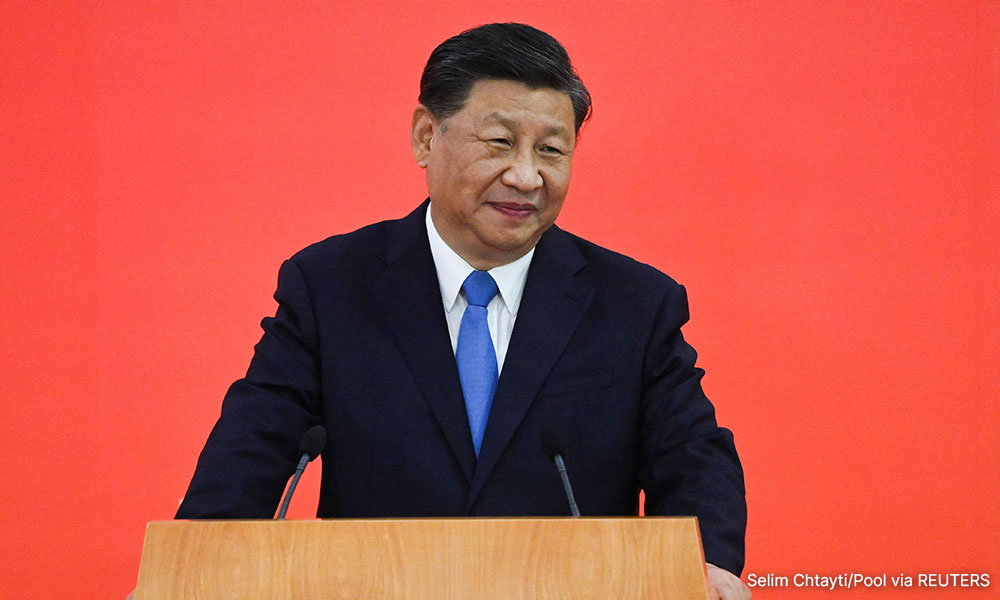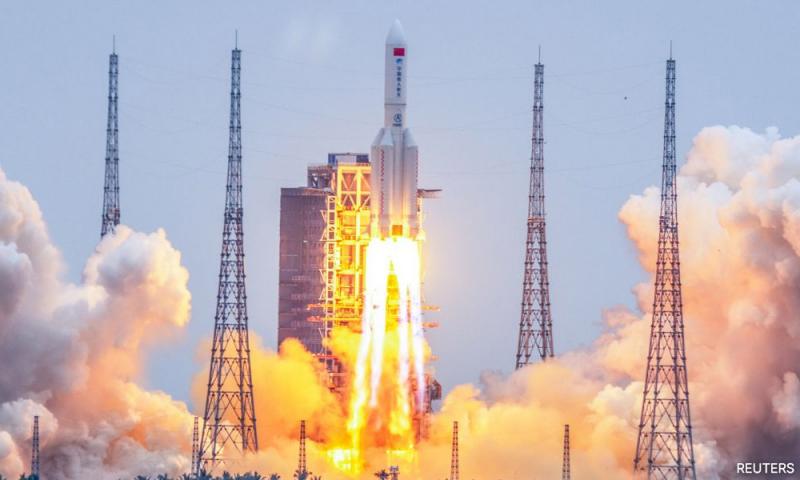China launches final module to its permanently inhabited space station
China today launched the last of the three modules that will comprise its space station, set to be the second permanently inhabited outpost in low-earth orbit after the Nasa-led International Space Station.
The uncrewed Mengtian, or "Dreaming of the Heavens", module was launched atop China's most powerful rocket, the Long March 5B, at 3:37pm from the Wenchang Space Launch Centre in the southern island province of Hainan.
In April 2021, China began construction of its space station with the launch of the Tianhe module, the main living quarters for astronauts. In July this year, it launched Wentian, or "Quest for the Heavens", a laboratory module where scientific experiments will be performed.
The 23-tonne Mengtian, also a laboratory module, is expected to dock with an axial port at one end of Tianhe later on Monday.
But the space station will only take on its final T-shape - with Tianhe as the core flanked by the two lab modules - when Mengtian is repositioned, while in orbit, to one of Tianhe's radial ports on its side.
The completion of the Chinese space station, designed for a lifespan of at least 10 years, will be a milestone in China's ambitions in low-earth orbit, with Nasa's aging ISS potentially ceasing operation by the end of the decade.
Growing clout
The Chinese-built "Celestial Palace", as the space station is known at home, will also be an emblem of China's growing clout and self-sufficiency in its space endeavours and a challenger to the United States in the domain, after being isolated from the ISS and other collaboration with Nasa.

The space station also caps Chinese President Xi Jinping's 10 years as leader of China's ruling Communist Party.
During the station's lifetime, China is planning more than 1,000 scientific experiments - from studying how plants adapt in space to how fluids behave in microgravity.
International demand for experiments to be conducted on the Chinese station will also rise if the ISS retires in the coming years. More than 3,000 science experiments have been performed aboard the ISS since November 2000.
China has approved at least nine proposals from scientists in countries ranging from Switzerland to India in the first batch of experiments in cooperation with the United Nations space office.
Russia's space agency in August unveiled a physical model of a planned Russian-built space station, the final form of which would be years away.
Two more missions this year are needed before China's station is ready for operation.
An automated cargo resupply vessel - the Tianzhou-5 - is expected to be launched in November, ahead of the arrival of three astronauts in December on the Shenzhou-15 spacecraft for long-term habitation on the space station.
China's space programme has come far since late leader Mao Zedong lamented that the country could not even launch a potato into orbit.
China became the third country to put a man in space with its own rocket, in October 2003, following the former Soviet Union and the United States.
- Reuters
RM12.50 / month
- Unlimited access to award-winning journalism
- Comment and share your opinions on all our articles
- Gift interesting stories to your friends
- Tax deductable

 Reuters
Reuters